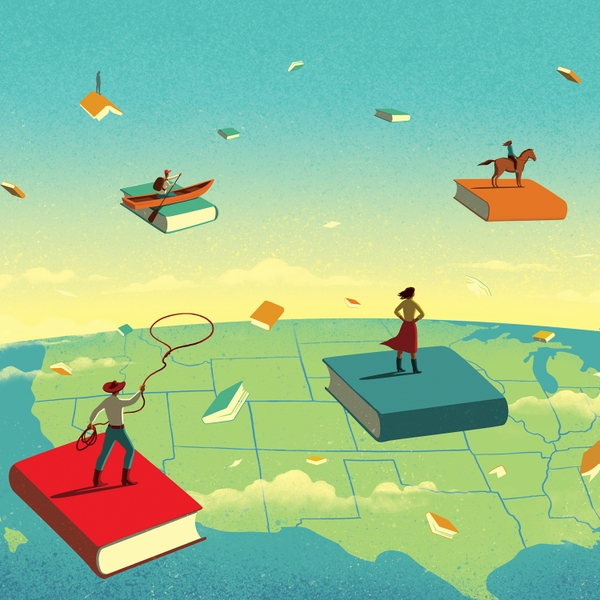Our Favorite Outdoor Adventure Books for Every State
Go beyond Abbey and McPhee with a great read for wherever your next journey takes you
Heading out the door? Read this article on the Outside app available now on iOS devices for members! Download the app.
There’s almost nothing better than cracking open a book right where the action takes place—reading Cheryl Strayed’s Wild on the Pacific Crest Trail or Sebastian Junger’s The Perfect Storm beside the Atlantic seas that claimed the fishing boat Andrea Gail.
Whether you’re rolling on a road trip or hunkered down under your tent’s rain fly, you need a worthy paperback companion. In compiling this list, we weren’t looking for another batch of Classics with a capital C, though our selections do include a few. Instead, we canvassed our editors, contributors, and readers with a simpler question: What book would you stuff in your backpack if you were headed to Maine? Or California? Or Missouri or South Carolina or even Washington, D.C.? And because we couldn’t help ourselves, we also slipped in bonus picks for a few states.
The resulting collection is wide, immersive, and above all readable. We hope it takes you places, whether out in the wild or burrowed happily in your favorite chair.
Alabama: The Last Slave Ship, by Ben Raines (2022)

In 1860, 50 years after the Atlantic slave trade was abolished, the schooner Clotilda stole into Alabama’s Mobile Bay carrying 110 kidnapped West Africans from Benin. Those enslaved people would go on, after Emancipation, to found a community known as Africatown, and their stories would be told in various chronicles, including Zora Neale Hurston’s Barracoon. But Clotilda itself disappeared. Then, in April 2018, using old maps and journals, charter captain Ben Raines found the wreck under the murk of the Mobile River delta. His story weaves together his own obsession with finding the ship and the stories of the people it carried. “Clotilda was a ghost that haunted three communities—the descendants of those transported into slavery in her hold, the descendants of their fellow Africans who sold them, and the descendants of their American enslavers,” Raines writes. “The only way for that ghost to begin to be expelled was for the ship to be revealed.” —Elizabeth Hightower Allen
Alaska: The Sun Is a Compass: My 4,000-Mile Journey into the Alaskan Wilds, by Caroline Van Hemert (2019)

Over the last century, icons like John Muir, John McPhee, and Jon Krakauer have all written about Alaska’s beauty, its severity, and its seductive isolation. But the book that sticks with me most is more recent: Caroline Van Hemert’s 2019 memoir, The Sun Is a Compass, about a months-long, 4,000-mile adventure taken by Van Hemert and her husband. They start in coastal Washington, row the Inside Passage to the Alaska panhandle, then strap on skis and traverse the Coast Range. They canoe, pack-raft, and hike across the Yukon and through the Brooks Range before emerging on Alaska’s Arctic coast. It is an impressive adventure, but what I love most about the book is its quiet message. Van Hemert is a scientist who lost touch with how her work used to bring her into sync with nature. Her journey has a purpose that any of us can relate to: reconnecting to the ways the wild world ebbs and flows around us. —Eva Holland
Bonus Read: Pilgrim’s Wilderness, by Tom Kizzia (2013), an account of the many abuses by modern-day homesteader Papa Pilgrim in what its publisher bills as “Into the Wild meets Helter Skelter.”
Arizona: The Emerald Mile, by Kevin Fedarko (2013)
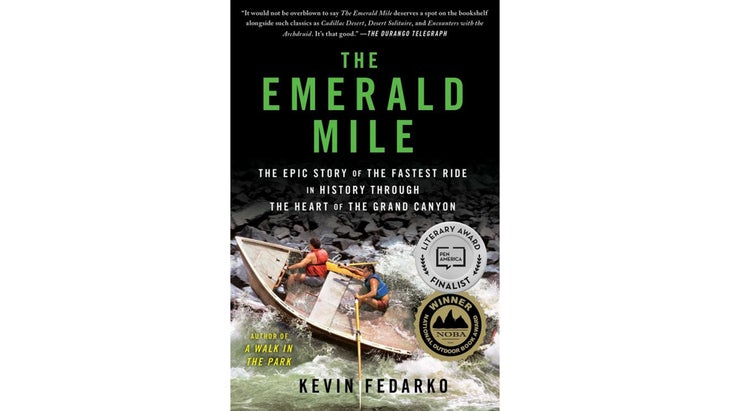
The stack of literature about the Grand Canyon is as deep and varied as the rock layers themselves, but we’re picking the work with the most cubic thrills per second: The Emerald Mile. It’s the account of the famed 1983 “speed run” through the Grand Canyon, in which three river guides slipped a wooden dory into the raging floodwaters of the Colorado River by moonlight during a record-breaking high-water year. It was a wild ride—227 miles in just 36 hours—but just as wild was the effort by Bureau of Reclamation hydrologists to keep Lake Powell from breaching the Glen Canyon Dam amid the mayhem of the largest helicopter rescue the canyon had ever seen. Come for the adrenaline, stay for the history of the canyon, both natural and man-made. —E.H.A.
Bonus Read: The Devil’s Highway (2005), the harrowing saga of 26 men attempting to cross the most desolate stretch of the U.S.-Mexico border, by Luis Alberto Urrea.
Arkansas: The Grail Bird, by Tim Gallagher (2005)

The cypress swamps of Arkansas erupted in a blaze of glory in 2004, when the Lord God Bird— a.k.a. the ivory-billed woodpecker—was sighted in the state’s Cache River Wildlife Refuge after being presumed extinct for decades. But was that feathered ghost really the ivory-billed? Gallagher, the editor of Living Bird magazine and one of the birders who’d seen the bird, set out to find proof that the woodpecker still existed. If so, he wrote, “it would be the most hopeful event imaginable: we would have one final chance to get it right, to save this bird and the bottomland swamp forests it needs to survive.” Sure enough, in 2022, 17 years after The Grail Bird was published, field researchers claimed multiple new sightings of the Lord God Bird, this time in Louisiana. Bird species may be declining around the world, but in this book, hope is indeed the thing with feathers. —E.H.A.
California: The Last Season, by Eric Blehm (2006)
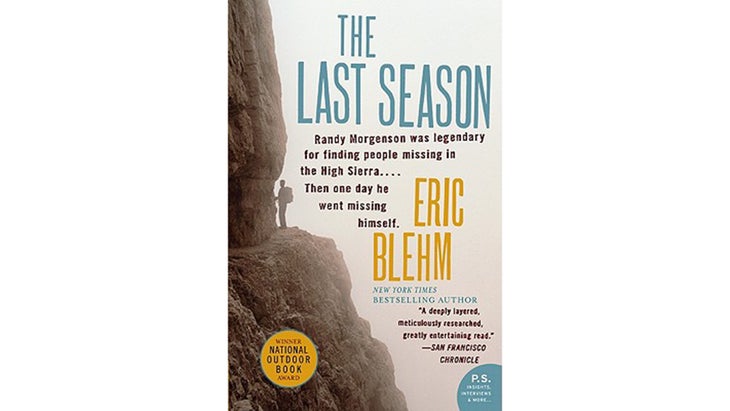
We know you’re packing Wild, by Cheryl Strayed. But also consider The Last Season, which explores the Sierra Nevada through the life and writings of Randy Morgenson, a Yosemite-born park ranger who spent 27 and a half summers in the backcountry of Sequoia and Kings Canyon national parks. In July 1996, the 64-year-old loaded up his pack for a routine patrol through terrain he knew better than anyone. Then he disappeared, spurring one of the largest search-and-rescue operations in national park history. Blehm’s engrossing prose brings to life Morgenson’s dedication to the beauty and isolation of California’s landscapes—and the mystery of how they ultimately swallowed him whole. —Maren Larsen
Bonus Read: California Against the Sea (2023), Los Angeles Times reporter Rosanna Xia’s thoughtful look at how communities are coping with rising sea levels.
Colorado: Deep Creek: Finding Hope in the High Country, by Pam Houston (2019)
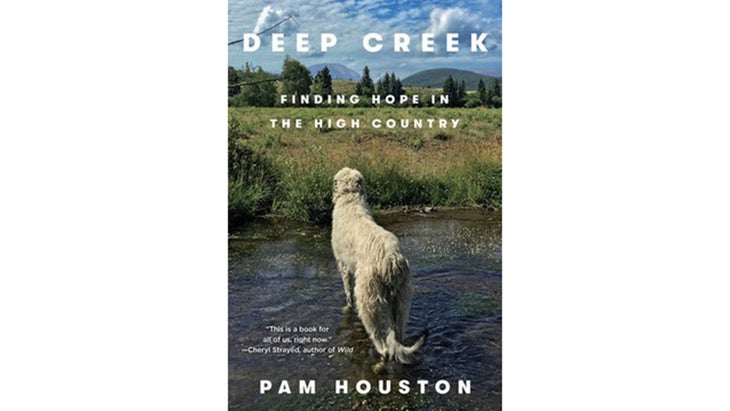
What would you do if you sold your first book and had a whopping $21,000 in your pocket? If you were Pam Houston, you’d take the money from your surprise 1992 bestseller Cowboys Are My Weakness and drive around the West looking for a home. And you’d find it, in a 120-acre ranch surrounded by the 12,000-foot peaks of the San Juans, outside the town of Creede. Populated with a rotating cast of beloved horses, donkeys, Icelandic sheep, and Irish wolfhounds, the ranch is her refuge through frozen winters, glorious summers, and a wildfire that almost wipes the whole place out. As for the hope part? It’s how Houston sees our obligation to the land itself. “As we hurtle toward the cliff, foot heavy on the throttle, to write a poem about the loveliness of a newly leafed aspen grove or a hot August wind sweeping across prairie grass,” she writes, feels like the height of naivete. “But then again, maybe not. Maybe this is the best time there has ever been to write unironic odes to nature.” —E.H.A.
Bonus Read: Powder Days (2021), Heather Hansman’s love song to the increasingly difficult lifestyle of the modern ski bum.
Connecticut: A Place of My Own, by Michael Pollan (1997)

Before Michael Pollan became our chief explainer of food and psychedelics, before “she sheds” started popping up across America, and before we all started working from home, the decidedly non-handy Pollan set out to construct a tiny writing cabin in his Connecticut backyard. “I wanted not only a room of my own,” he writes, “but a room of my own making. I wanted to build this place myself.” Two and a half years of weekends later, under the gruff tutelage of a local carpenter, he had a small shingled hut with a tiny porch and a picture window at the edge of the woods, “a place as much one’s own as a second skin.” He also had the material for this beautiful examination of home and office, work and solitude, privacy and creativity—a book, critic Janet Malcolm wrote at the time, “with the brilliant plainness of a piece of Shaker furniture.” —E.H.A.
Delaware: West of Rehoboth, by Alexs D. Pate (2001)

Sometimes adventure is not something that you undertake willingly but is thrust upon you by a change in circumstance or geography. Such is the case in Alexs D. Pate’s heartfelt coming-of-age novel, West of Rehoboth. The protagonist is a chubby, bookish boy named Edward, whose parents send him to spend the summer of 1962 with his Aunt Edna in West Rehoboth, the Black, working-class side of the well-known Delaware beach resort. While his mom waits tables, Edward explores the woods and creeks and fishes for crabs in the canal that divided the Black side of Rehoboth from the white side, and visits the small scrap of segregated beach allotted to Black folks. Everything about Delaware is terra incognita to him. The plot is explosive, but just as interesting is Pate’s portrayal of an unseen, under-represented side of a place that seems so peaceful and familiar. —Bill Gifford
Florida: The Orchid Thief, by Susan Orlean (1998)

After reading The Orchid Thief, you might find yourself with a new flower obsession, googling images of sexy little blooms and itching to get knee-deep in some gnarly swamp water. Susan Orlean experienced such a spiral while reporting this classic nonfiction book. She follows Florida man (in every sense) John Laroche’s extreme, sometimes illegal pursuits of rare orchids and explores other fanatics throughout history; bizarre orchid biology; and Florida’s particular natural and Indigenous history. Orlean isn’t a Floridian herself, so she offers a helpfully perplexed perspective on the state’s enticing weirdness. “The wild part of Florida is really wild. The tame part is really tame. Both, though, are always in flux,” she writes. Orlean comes to appreciate what any Floridian knows about one of the country’s most misunderstood states. Much like the strange beauty of an extraterrestrial-looking orchid, the qualities that make Florida unique are the same things that make us unable to look away. —Erin Berger
Georgia: Ecology of a Cracker Childhood, by Janisse Ray (1999)
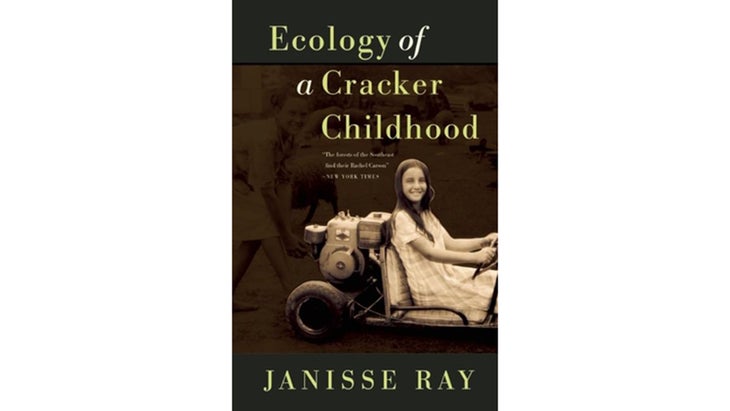
Part memoir, part natural history, Ecology of a Cracker Childhood earned Ray the sobriquet The Rachel Carson of the South. The book chronicles her childhood growing up in a junkyard alongside Highway 1—”not a bad place to grow up,” she writes, “weird enough to stoke any child’s curiosity, a playground of endless possibility.” Much of that possibility lay behind the piles of cars and radiators in “a singing forest of tall and widely spaced pines,” the longleaf pine ecosystem that once covered the entire South. When Ray wrote this book, only 1 percent of those old-growth longleaf forests remained. It took her a while to embrace her origins, but now, she writes, ”What I come from has made me who I am.” —E.H.A.
Bonus Read: Outcasts United (2009), Warren St. John’s bestselling story of how a refugee kids’ soccer team united tiny Clarkston, Georgia.
Hawaii: Aloha Rodeo, by David Wolman and Julian Smith (2019)

In 1908, three paniolos from the Big Island pulled off a huge upset at Wyoming’s Frontier Days rodeo, winning the steer-roping competition to the dismay of the mainland cowboys. While the event is central to this book’s narrative, the backstory is what’s most captivating; Hawaiians have been herding longhorn up and down the rough slopes of the state’s volcanoes since the early 1800s, decades after cattle were first dropped into the waters off the western town of Captain Cook and forced to splash their way ashore amid the sharks. Spanish vaqueros who came from California taught locals their skills, introducing the islanders to working with horses to help them manage what quickly became a massive bovine population that would change not only the landscape but island culture and politics. That heritage lives on during the annual Panaewa Stampede Rodeo in Hilo. —Tasha Zemke
Bonus Read: The Wave (2010), Susan Casey’s immersive exploration of the “monsters of the deep” and the surfers who chase them.
Idaho: Indian Creek Chronicles: A Winter in the Wilderness by Pete Fromm (1993)
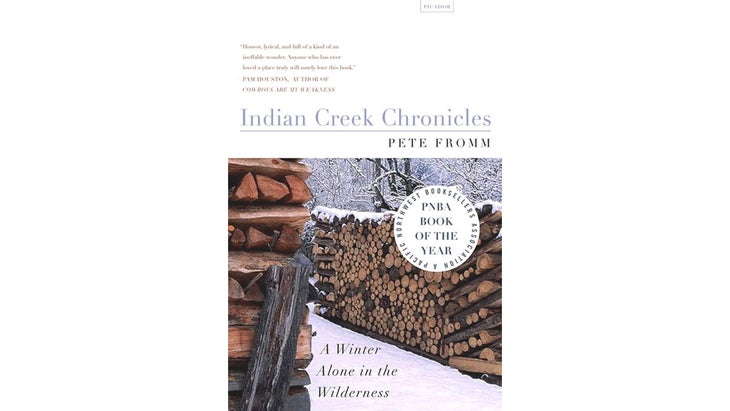
In 1978, Pete Fromm was a 20-year-old student at the University of Montana in Missoula. That year, he stumbled into a job overwintering in a wall tent in the Selway-Bitterroot Wilderness guarding millions of tiny salmon eggs that Idaho Fish and Game had placed in the local hatchery. Fromm decided he wanted to be a mountain man, but he couldn’t have been more uneducated in the ways of wilderness survival. He goes into the backcountry a naive quasi–frat boy and comes out closer to Grizzly Adams. Which is to say, almost entirely on his own, he learns to hunt (everything from grouse to moose), cook (from the barest cache of dry goods), get from point A to point B (mostly on snowshoes), and appreciate the predators, prey, and chorus of hunters that break up his sometimes unbearable isolation. Read this book if you liked Into the Wild but wanted a triumphant ending. —Tracy Ross
Illinois: Life of Black Hawk, or Ma-Ka-Tai-Me-She-Kia-Kiak, by Black Hawk (1833)
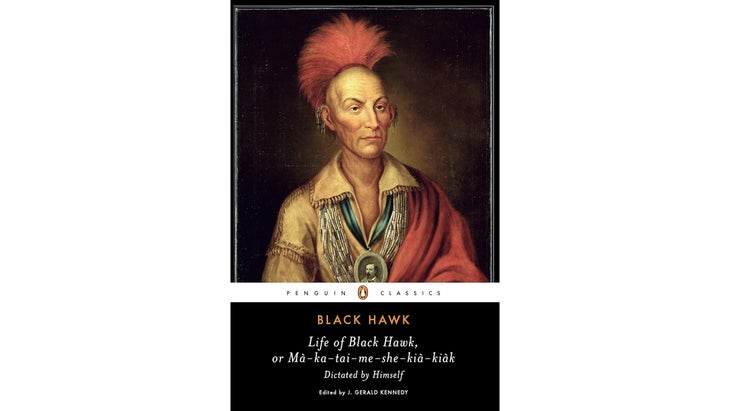
This 19th-century Sauk war captain is best known for the 1832 conflict that bears his name, in which Sauk soldiers fought with the British to repel American settlers from parts of present-day Illinois and Wisconsin. But he also dictated his autobiography to an interpreter, an adventurous story for an adventurous life. Black Hawk fought his first battle while barely a teenager, clubbing an Osage enemy to death and then presenting the scalp to his father. “He said nothing,” Black Hawk recalls, “but looked pleased.” This book bristles with violence—the death of his father at the hands of Cherokee fighters, the death of his adopted son by a few murderous whites. But it also contains wonderful descriptions of the cornfields tended by Sauk women, the Rock River with its abundance of fish, the land that houses “the graves of our friends.” After losing the Black Hawk War, the Sauk had to leave all of it, something Black Hawk laments again and again: “Why did the Great Spirit ever send the whites to this island, to drive us from our homes?” —Craig Fehrman
Indiana: Rural Free: A Farmwife’s Almanac of Country Living, by Rachel Peden (1961)

Rachel Peden was a farmer and local newspaper columnist before Knopf published her first book, Rural Free, in 1961. The book became a media sensation (as did its author), and reading it now you can see why. Rural Free’s chapters follow the months, starting with September, and in them Peden describes her family, their farm, and the natural world that envelops them. “Nights,” she writes, “are marked by a steady humming spread on the air like a thick blanket.” Peden makes sure her readers can hear the different parts of that humming, the crickets and the katydids and “the rare cello of a big bullfrog at the pond back of the barn.” Her writing remains funny, observant, unhurried, and most of all local, committed to the smells and sights and sounds of her home state. —C.F.
Iowa: Wildland Sentinel: Field Notes from an Iowa Conservation Officer, by Erika Billerbeck (2020)

If you’re curious about what wilderness looks like in a state that’s 97 percent privately owned, try this fresh memoir by a rookie law enforcement ranger. “I am an Iowa native,” Billerbeck writes. “But as a newly badged officer, standing in the bed of my pickup for a better view, … I found myself wondering if I would be able to find the natural resources I was sworn to safeguard.” Her work includes everything from arresting drunken boaters to chasing down wayward skunks. “I once read a memoir by a game warden who seemingly emerged from the womb with a badge on his chest and a gun on his hip,” she writes. “My story is much less heroic.” Still, there may be no better way to get to know Iowa’s wild spaces than riding shotgun in Billerbeck’s truck. —E.H.A.
Bonus Read: A Thousand Acres (1991), novelist Jane Smiley’s prizewinning reimagination of King Lear on a 20th-century farm.
Kansas: Grassland: The History, Biology, Politics, and Promise of the American Prairie, by Richard Manning (1997)

Many travelers speed through the grassy expanses of the Great Plains, but in doing so they miss a landscape both beautiful and powerful. In Grassland, Richard Manning explores the history of these vast landscapes, their rich biology, the myriad misguided efforts to tame them, and the growing understanding of our need to adapt our lives to the grasslands rather than try to get them to adapt to our agendas. Grassland will compel and haunt you with its appreciation of the unique character and experience of the plains. “The solitude of the prairie is like no other,” he writes, “the feeling of being hidden and alone in a grassland as open as the sea.” —Jonathan Beverly
Kentucky: Appalachian Elegy, by bell hooks (2012)
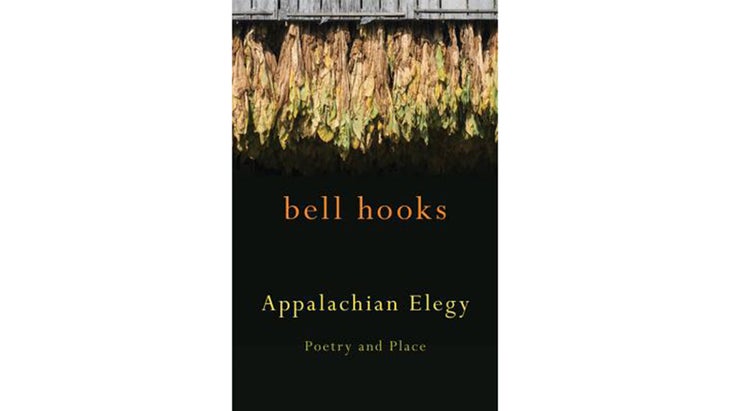
In a state that rightfully claims Wendell Berry as its bard and eco-conscience, another writer has harvested poetry just as connected to the land. Writer and feminist bell hooks started her journey in the isolated foothills of Appalachia; while her path took her to Stanford University and New York, she returned to teach at Berea College in eastern Kentucky, where she lived until her death in 2021. The poems here give voice to generations of Black people who took refuge in rural mountain pockets and made them their own. “To be from the backwoods was to be part of the wild,” hooks writes in the book’s introduction. “Where we lived, black folks were as much a part of the wild, living in a natural way on the earth, as white folks. All backwoods folks were poor by material standards; they knew how to make do. They were not wanting to tame the wild, in themselves or in nature.” —E.H.A.
Louisiana: The Tin Roof Blowdown, by James Lee Burke (2007)
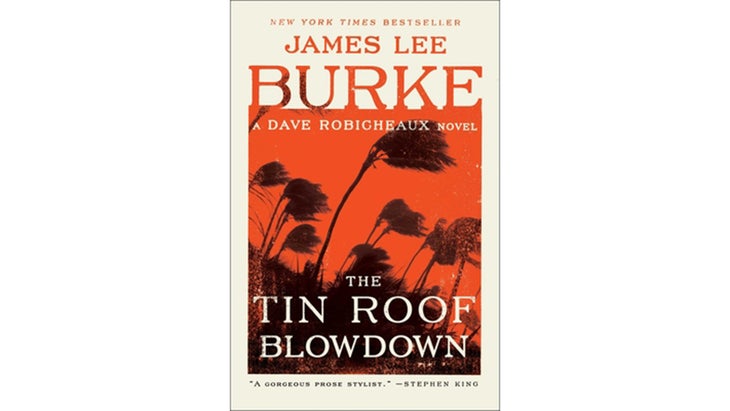
Hurricane Katrina did more than expose the social fractures of low-lying New Orleans and the ineptitude of the federal disaster response. The 2005 storm and its aftermath also inspired some of the best nonfiction of the 21st century. Our pick is fictional, but no less true: James Lee Burke brings back beloved Iberia Parish detective Dave Robicheaux in The Tin Roof Blowdown, which The New York Times called “the definitive crime novel about Hurricane Katrina.” Robicheaux finds himself neck-deep in corrupt muck populated by looters, trapped church parishioners, and a missing priest. Read those nonfiction books for their masterful journalistic accounts; read this for the human tide that flows underneath. —E.H.A.
Bonus Read: The Great Deluge (2006), the must-read account of the disaster by historian—and Katrina evacuee—Douglas Brinkley.
Maine: The Stranger in the Woods: The Extraordinary Story of the Last True Hermit, by Michael Finkel (2017)
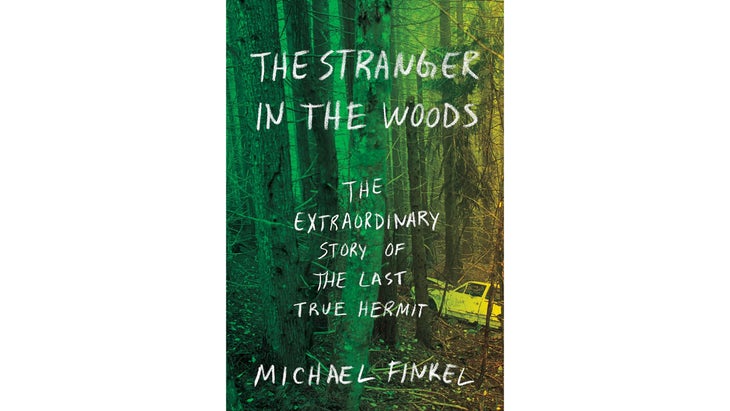
Ever since Henry David Thoreau struck off for the Maine Woods in 1864, we have turned to this wilderness to both find and lose ourselves. At 20, Christopher Knight made an arguably childish decision to get lost in these storied woods in the spring of 1986. Then he decided to stay that way for 27 years, not by surviving off the land but by raiding nearby vacation cabins. He was a modern-day robber-hermit who never took more than he needed and almost always locked up after he was done “shopping.” With spare, precise prose, Finkel lays a case that Knight, who had only two conversations during his time in the woods, is a uniquely Maine phenomenon, combining a sincere need to be left alone with the local live-and-let-live sensibility that allowed for such an existence. “He does not care if people fail to understand what he did in the woods, “ writes Finkel. “He didn’t do it for us to understand. He wasn’t trying to prove a point. There was no point.” Knight was, in his own words, “completely free.” —W. Hodding Carter
Maryland: Beautiful Swimmers: Watermen, Crabs, and the Chesapeake Bay, by William W. Warner (1976)

The Latin name for the Chesapeake blue crab, Callinectes sapidus, translates literally as “savory beautiful swimmer.” And this ode to Maryland’s Eastern Shore and its watermen is worthy of that name. Warner spent a year out with crabbers, and no piece of eelgrass or ritual of crab courtship escapes his notice. That’s because he treats the lives of these crustaceans, and the crabbers who follow them, with the utmost fascination and delight. Winner of the Pulitzer Prize, Beautiful Swimmers is indispensable reading about the Chesapeake Bay. —E.H.A.
Massachusetts: Upstream, by Mary Oliver (2016)
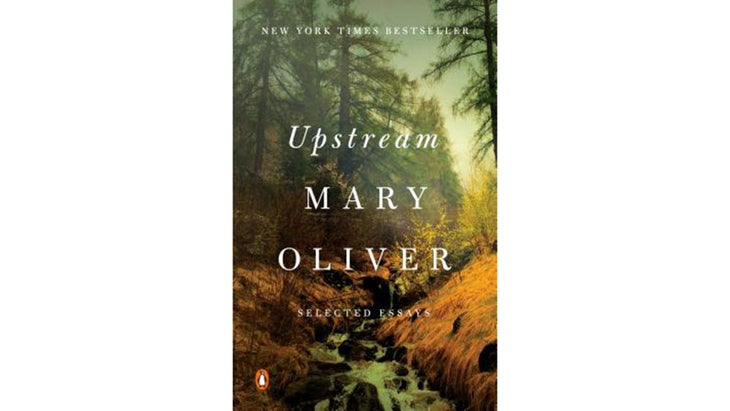
In her final book, Upstream, Mary Oliver muses with her classic quiet elegance on the transcendentalists before her and winds their stories with her own moments of awe in nature. Set in her cabin on Cape Cod, she talks about her small discoveries—a wounded gull, being unable to find the right words to describe a sunflower, a fox out on a frozen pond. Oliver reminds us to take that extra deep breath, to slow our step and be present in nature, which I would argue is the best adventure of all. —Kyra Kennedy
Bonus Read: North Woods (2023), a fictional chronicle of one piece of western Massachusetts land and its inhabitants over the centuries, by Daniel Mason.
Michigan: Rivers of Sand: Fly Fishing Michigan & the Great Lakes Region, by Josh Greenberg (2014)
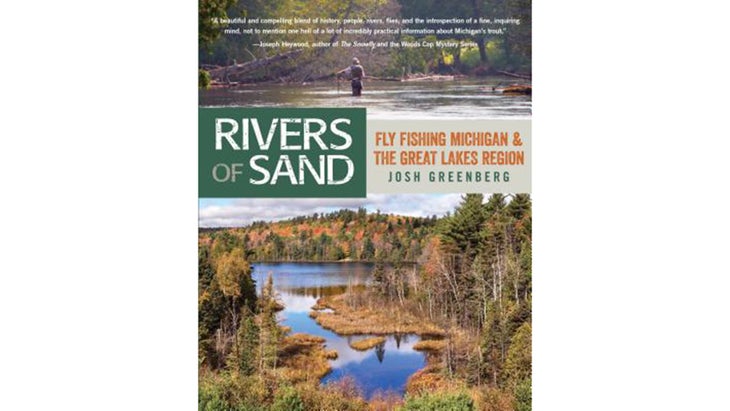
If you hear the words Michigan and trout, you’ll probably think of Ernest Hemingway’s The Nick Adams Stories. But for my money, the best writing about fishing in Michigan is found in a guidebook: Rivers of Sand, by Josh Greenberg, who owns and runs Gates Au Sable Lodge on the famed Holy Waters of the Au Sable. Sure, it’s helped me catch more fish. But it’s also taught me how to be a better angler, which is a different thing. In an early chapter about fishing small creeks in the state, Greenberg stumbles onto a 20-inch monster cruising in a pool. Before even trying to catch the thing, he writes, “This trout, on this mysterious little Michigan stream, in the day, in the sunlight, was priceless in the way only nature can be priceless.” That’s the way I want to think about fishing: as a pursuit rather than an activity, a journey rather than a destination. And Greenberg is exactly the guy I want to guide me. —Jonah Ogles
Minnesota: A Year in the Wilderness: Bearing Witness in the Boundary Waters, by Dave and Amy Freeman (2017)

In 1956, Sigurd F. Olson published The Singing Wilderness, a compilation of lyrical essays celebrating four seasons in northern Minnesota’s Boundary Waters Canoe Area Wilderness and the adjacent Quetico Provincial Park in Ontario. The book was the gold standard of north-woods nature writing for more than half a century. In 2017, married couple Dave and Amy Freeman furthered that tradition, bringing a unique perspective to the Boundary Waters’ beautiful solitude through an entire year of sleeping, eating, paddling, portaging, dogsledding, and camping within the confines of the one-million-acre wilderness. More important, they set out to accomplish a specific mission—to raise awareness of the threats that proposed sulfide-ore copper mines pose to the region. “The year taught us to slow down,” Amy writes. “We were able to notice all these tiny miracles happening all around us that we would have missed if we were focused on racking up the miles.” —Stephanie Pearson
Bonus Reads: The Indigenous histories by Ojibwe Red Lake brothers David and Anton Treuer, including Anton’s Warrior Nation (2015) and David’s Heartbeat of Wounded Knee (2019).
Mississippi: Salvage the Bones, by Jesmyn Ward (2011)
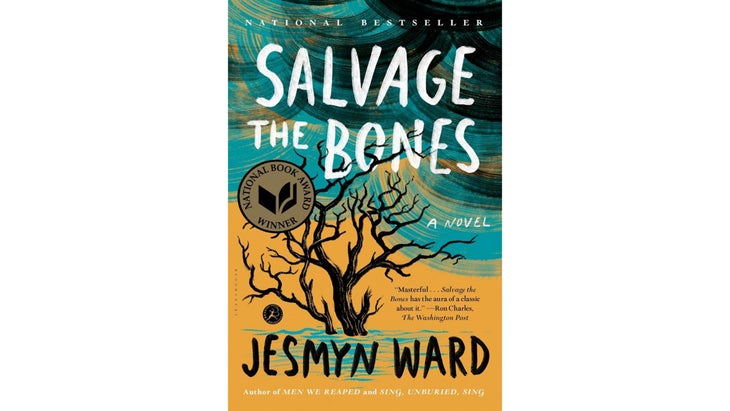
In Jesmyn Ward’s seminal novel about a family loving and fighting its way through life in southern Mississippi in the days before Hurricane Katrina, nature weaves its way into, out of, over, and through her characters as a living, breathing being. The inescapable red dirt is at once a parasite invading their very pores and a friend comforting and enveloping. It’s in every step Esch, the pregnant adolescent protagonist, takes and in every breath she breathes. Nature is a mother striding alongside Esch and her brothers as they dart into and through danger—sometimes holding their hands, sometimes swatting them: “all I can hear is the pine trees shushing each other, the oak trees bristling, the magnolia leaves hard and wide so that they sound like paper plates clattering when the wind hits them,” writes Ward. In Salvage the Bones, her lyrical talent dissolves the separation between humans and nature. —W.H.C.
Missouri: Mississippi Solo, by Eddy L. Harris (1988)
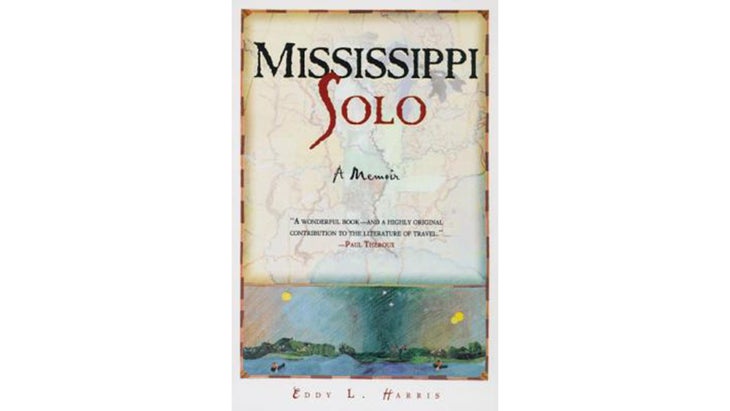
Ever since Mark Twain worked as a steamboat pilot in the 1850s, the Mississippi River has sparked boyhood dreams. Eddy Harris certainly had them; growing up in St. Louis, he’d always wanted to travel the river from source to sea. In other ways, he wasn’t the usual river bard. He didn’t know how to paddle, for one; and he’s Black. Still, in 1985, at age 30, he launched a canoe in Lake Itasca, Minnesota, bound for New Orleans, a journey, he writes, from “where there ain’t no black folks to where they still don’t like us much.” Harris dodges barges, wild dogs, and locals with shotguns, but mostly encounters kindness and generosity. Twenty-five years later, he repeated the adventure in a trip he joked about as “old black man meets old man river.” This more recent trip was an “anti-fear” journey, he said, to show Black Americans that nature belongs to them as much as anyone. The resulting 2017 documentary, River to the Heart, is a big-hearted bookend to one of the best travelogues ever written about America’s heartland. —E.H.A.
Montana: Fools Crow, by James Welch (1986)
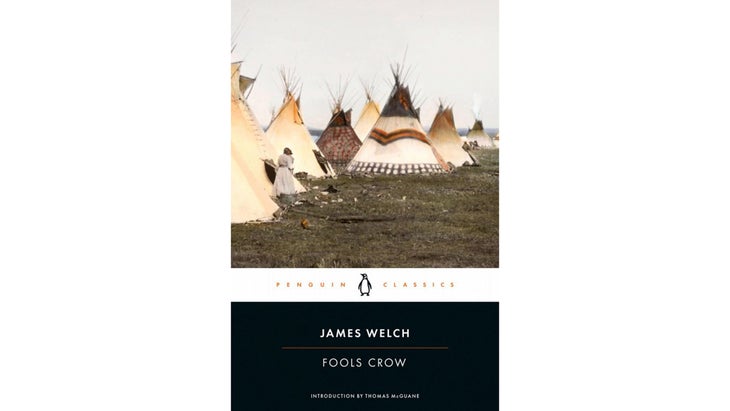
There are plenty of great books about Montana, including Norman Maclean’s beloved A River Runs Through It and Young Men and Fire. But consider the lesser known classic Fools Crow, a 1986 novel by Blackfoot and A’aninin (Gros Ventre) author James Welch. Set in the 1870s, a young man called White Man’s Dog comes of age in a time when his culture and people are under siege. His homeland is fecund and beautiful: mountains and plains populated with ample wildlife and threaded by generous rivers. But white settlers are overtaking Blackfoot lands, the U.S. government is launching bloody military campaigns, and smallpox encroaches. In this book, Welch offers a window into a different Montana, before massive national parks, wealthy ski-resort towns, and white ranchers came to define the area. —Abigail Barronian
Bonus Read: American Wolf (2017), Nate Blakeslee’s compelling, affecting biography of legendary Yellowstone alpha female O-Six.
Nebraska: Zoo Nebraska, by Carson Vaughan (2019)
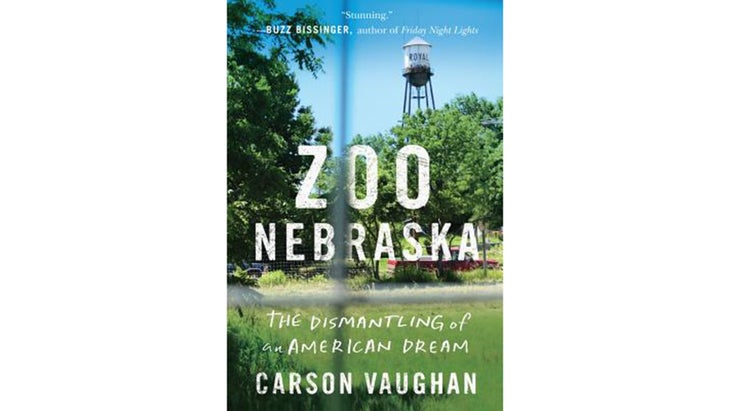
This stranger-than-fiction tale unspools the story of Dick Haskin and his crazy dream of running a primate research center in his tiny hometown of Royal, Nebraska. It’s got everything: unexpected twists, small-town intrigue, and, of course, violent chimpanzees on the loose. Guilty watchers of Tiger King know how easy it would be to play it all for lurid comedy. But Vaughan sees something deeper. Haskin had been planning to go to Rwanda to study under primatologist Dian Fossey when poachers murdered her. Instead, he acquired Reuben, a young male chimp, and bought a trailer home on the edge of town to keep his research dream alive. With a detective’s eye for detail and an unerring ear for dialogue, Vaughan reveals Haskin’s undoing for what it really is: a strange, ineffable, and heartbreaking emblem of what it means to live in—and feel circumscribed by—the narrow bounds of a dying town. —Ted Genoways
Bonus Read: Ted Genoways’s own book, This Blessed Earth, about the modern complexities of working a traditional American family farm (2017).
Nevada: Savage Dreams: A Journey into the Hidden Wars of the American West, by Rebecca Solnit (2000)
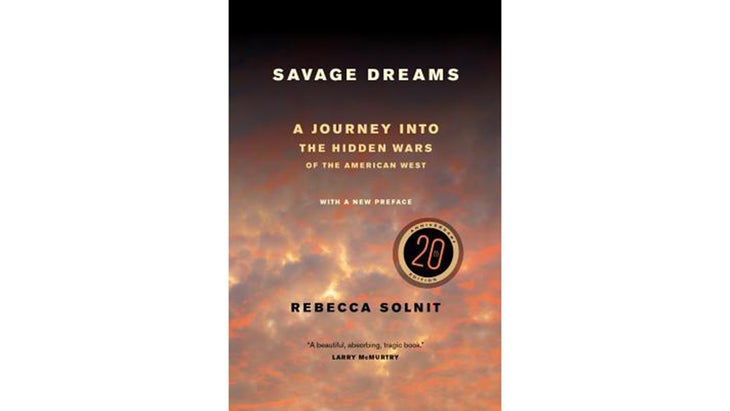
Rebecca Solnit’s second book explores what she has dubbed the “hidden wars of the American West,” including the violent expulsion of the Ahwahnechee tribe from California’s Yosemite Valley in 1851 and the nuclear testing at the Nevada Test Site beginning a hundred years later. Those tests exposed “downwinders” in the Great Basin to the fallout from hundreds of nuclear explosions over a two-year period. Nevada, with its wide-open desertscapes, colorful skies, and remote peaks, cannot be understood without an honest look at how the land and people fell victim to the nation’s quest for global military supremacy. But Solnit’s capacious writing brings both the ravages and the beauty of Nevada to life. The book, a combination of criticism, reportage, and historical research, helps the reader place these events in the longer history and myth-making of the American West, and raises questions about how we relate to both wild and developed landscapes. —A.B.
New Hampshire: A Walk in the Woods, by Bill Bryson (1998)
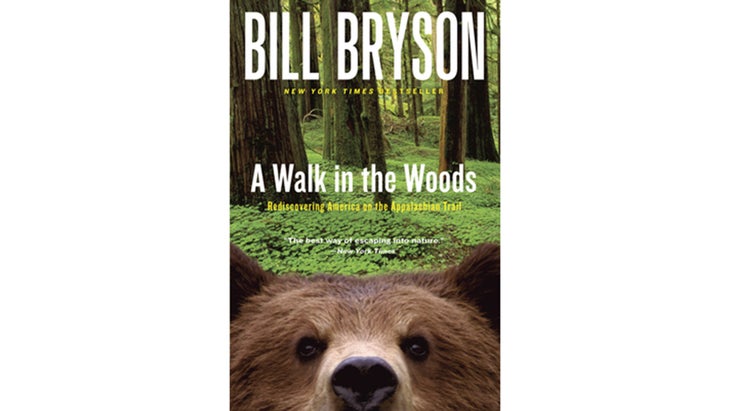
A Walk in the Woods is to the Appalachian Trail what Wild is to the Pacific Crest Trail—a book-turned-movie that sent hordes of hikers in its bootprints—only a whole lot funnier. While Bryson began his hike in Georgia and ended up walking only about 40 percent of the route, the Granite State is what inspired the whole idea. Freshly settled in Dartmouth after years living in England, Bryson happened upon a path leading into the forest. Oh gee, it’s the AT! But readers’ groans will turn quickly to snorts during a Monty Python-esque set piece at the Dartmouth Co-op with a gear-splaining sales clerk: “He would say things to me like: ‘Now this has a 70-denier high-density abrasion-resistant fly with a ripstop weave. On the other hand, and I’ll be frank with you here’—and he would lean to me and reduce his voice to a low, candid tone as if disclosing that it had once been arrested in a public toilet with a sailor—‘the seams are lap felled rather than bias taped and the vestibule is a little cramped.’” This scene alone is worth the price of admission, and thankfully it’s just the beginning. —E.H.A.
New Jersey: The Meadowlands: Wilderness Adventures at the Edge of a City, by Robert Sullivan (1998)
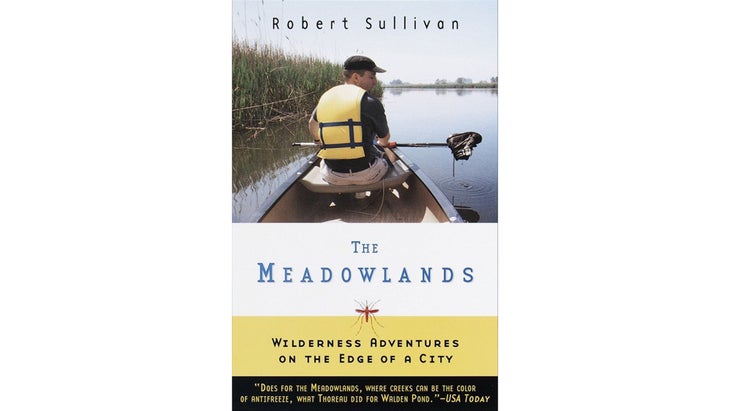
John McPhee’s The Pine Barrens, a magisterial account of that million-acre tract of forest in southern New Jersey, might seem the logical pick here, but I would suggest that Sullivan’s unexpected foray into “the world’s greatest industrial swamp” more compellingly captures the always fraught human-nature nexus in the Garden State. Living in the Pacific Northwest, with snowcapped mountains at his disposal, Manhattan native Sullivan decides to come home to explore—on foot, on car, on kayak—a landscape that haunted his boyhood. Where, as Sullivan notes, the first settlers would have found animal life “comparable to the number of cars on the Turnpike on a Friday night before a holiday,” its marshy recesses became a sordid Superfund symbol for environmental degradation (with the disposal of everything from PCBs to, reputedly, any number of mobsters) and a gritty, forlorn backdrop to Springsteen, The Sopranos, and the rest of the Jersey mythos. “There are real hills in the Meadowlands,” Sullivan writes, in one of my favorite sentences, “and there are garbage hills.” Today, the ever evolving Meadowlands, after decades of cleanup efforts, has become a favored habitat for birds, with nearly 300 species recorded. Not bad for the swamps of Jersey. —Tom Vanderbilt
New Mexico: Bless Me, Ultima, by Rudolfo Anaya (1972)
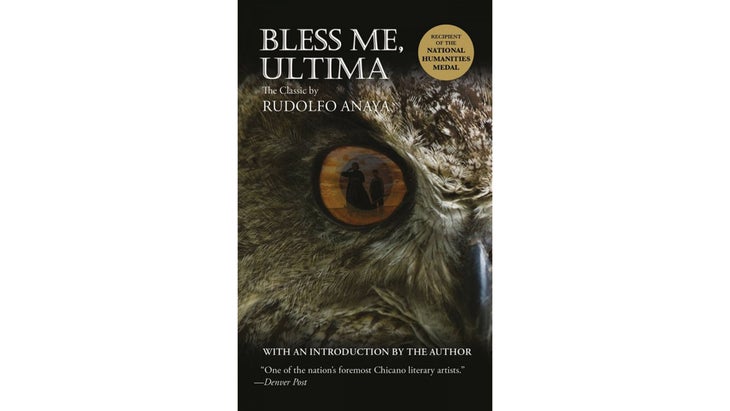
The Land of Enchantment is so rich in literary tradition—Indigenous, Hispanic, and Anglo—that we had a hard time choosing (and we don’t say that just because many of Outside’s editors live in Santa Fe). Anaya weaves many of those threads together in the story of Antonio, a Chicano boy in 1950s Santa Rosa navigating a universe of Spanish Catholicism, Indigenous tradition, and ambient magic. The title character, the curandera, or healer, Ultima, is “a repository of Spanish, Mexican, and Native American teachings,” Anaya wrote in a new introduction in 1999. “With her guidance Antonio begins to understand that the river, the open plain, and all of nature is imbued with spirit. Everything is alive; God is everywhere.” By now a beloved coming-of-age classic, Bless Me, Ultima has been banned and even burned for what was seen as antireligious messaging. But its hold on readers has endured. —E.H.A.
Bonus Read: Shutter (2022), Navajo author Ramona Emerson’s chilling debut about a Diné crime scene photographer who can’t escape the ghosts of the victims whose deaths she documents.
New York: My Side of the Mountain, by Jean Craighead George (1959)

I was already a semi-feral child in the New York suburbs by the time I read this classic 1959 novel about 12-year-old Sam Gribley, who runs away from his family in New York City to live off the land in the Catskills with a falcon, a weasel, and other wild friends for company. It’s meant to be read by kids about the age of its protagonist and has had an outsize impact on generations of civilization-cramped children, serving as a gateway drug to a lifelong addiction to the natural world. The book is full of lessons in grit, resourcefulness, and self-sufficiency, from trapping animals to making acorn pancakes. But it is the direct language that connects most with its young readers, allowing them to imagine a life lived closer to nature’s rhythms. “Spring is terribly exciting when you’re living right in it,” Sam observes. A Washington Post reporter before turning to books, George often said she was channeling through Sam her own childhood memories, including a desire to escape the confines of society. —Tim Sohn
North Carolina: The Last American Man, by Elizabeth Gilbert (2002)
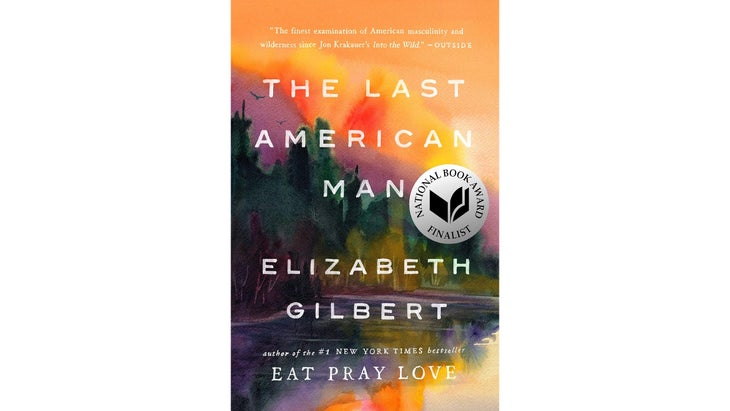
Eight years before Eat, Pray, Love made her a celebrity, Elizabeth Gilbert wrote this classic about the kind of self-reliant frontiersman we don’t tend to see anymore. “By the time Eustace Conway was 6 years old,” she writes, “he could throw a knife accurately enough to nail a chipmunk to a tree. By the time he was 10, he could kill a running squirrel at fifty feet with a bow and arrow. When he turned 12, he went into the forest alone and empty-handed for a week.” The first time Gilbert met him, he turned up in New York in a handmade buckskin suit. Some of Conway’s comments haven’t aged well; he told Gilbert he wanted a woman to bear him many children and read out diary excerpts detailing his ardent lovemaking. But dang, this man is tough, a character right out of The History Channel’s Mountain Men. And indeed, Eustace Conway has a recurring role on the show. —E.H.A.
Bonus Read: On Trails (2016), Robert Moor’s examination of how we find our way, from ant trails to Cherokee footpaths.
North Dakota: The Night Watchman, by Louise Erdrich (2020)
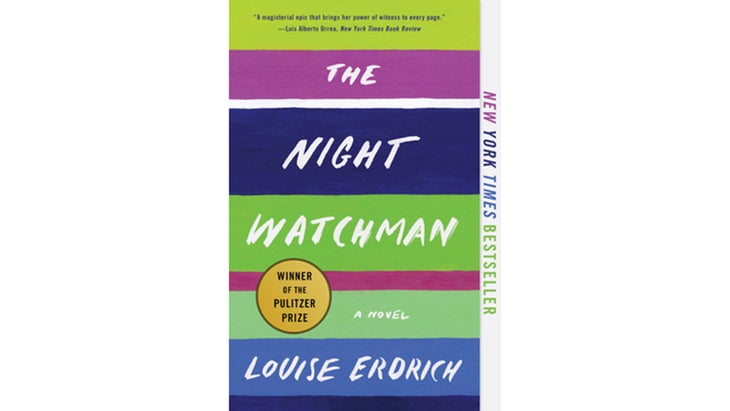
North Dakota is Erdrich country, and there’s no better place to start than this Pulitzer Prize–winning novel, the closest to her own life. A member of the Turtle Mountain Band of Chippewa, Erdrich based the plot on her maternal grandfather, Patrick Gorneau, the chief of the tribe’s advisory council and a night watchman at the local jewel-bearing plant, where tiny slivers were shaved off rubies and diamonds for watch and airplane parts. In 1954—true story—the U.S. government announced that the Turtle Mountain Band would cease to exist, part of its midcentury policy of “termination.” But after Gorneau testified before Congress, the tribe won a reprieve. As Erdrich writes in the novel’s addendum, “If you should ever doubt that a series of dry words in a government document can shatter spirits and demolish lives, let this book erase that doubt. Conversely, if you should be of the conviction that we are powerless to change those dry words, let this book give you heart.” —E.H.A.
Bonus Read: Yellow Bird (2020), by Sierra Crane Murdoch—an unflinching true-crime account of Arikara woman Lissa Yellow Bird’s redemptive quest to find out who killed an oil worker on tribal land.
Ohio: The Death and Life of the Great Lakes, by Dan Egan (2017)
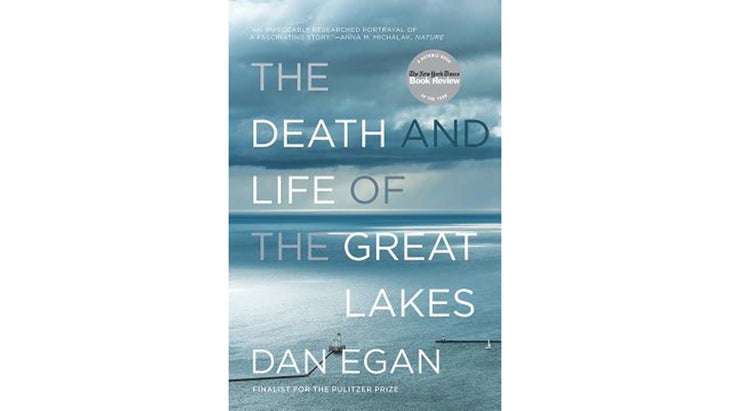
People don’t picture water when they picture Ohio. But there’s a lot of it there to explore, starting with the 94,000 square miles’ worth that make up the Great Lakes. As Dan Egan reveals in his masterful The Death and Life of the Great Lakes, these troubled waters strike many as an environmental success story—or at least as a huge improvement over the lakes’ industrialized low point, most famously evoked by Cleveland and its Cuyahoga River fire in 1969. Today, Egan notes, the Cuyahoga “draws more fishing lines than punch lines.” But underneath the sparkling blue surface, new ecological threats lurk. Take Toledo, where residents drained local swamps and created rich farmland but also toxic algae blooms that threaten Lake Erie and the area’s water supply. Egan tells a riveting, dispiriting story of canoes and lake trout and 20-foot waves—but, most of all, of humanity and its unintended consequences. —C.F.
Oklahoma: The Way to Rainy Mountain, by N. Scott Momaday (1969)

Kiowa author Momaday covers several states in his work—he spent most of his life in Arizona and New Mexico—but none so elementally as his birth state of Oklahoma. Part history, part memoir, and part folklore, The Way to Rainy Mountain explores his own identity as he follows the tribe’s migrations from Montana across the Great Plains and its ultimate forced relocation to a reservation in southwestern Oklahoma. There, at the foot of Rainy Mountain, he visits his grandmother’s grave. “To look upon that landscape in the early morning, with the sun at your back, is to lose the sense of proportion,” he writes. “Your imagination comes to life, and this, you think, is where Creation was begun.” —E.H.A.
Oregon: Astoria: Astor and Jefferson’s Lost Pacific Empire: A Tale of Ambition and Survival on the Early American Frontier, by Peter Stark (2014)
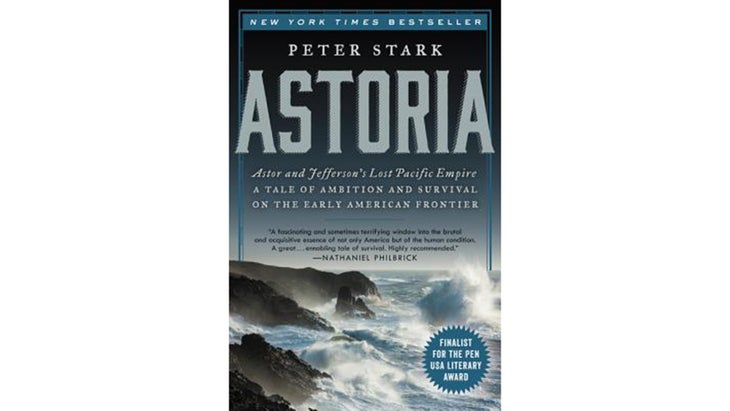
Peter Stark’s Astoria: Astor and Jefferson’s Lost Pacific Empire tells the story of John Jacob Astor’s plan to monopolize the global fur trade in 1810. It all hinged on establishing a trading post at the mouth of the Columbia River—present-day Astoria. Astor sent two expeditions: one by sea and the other overland, on a route established two years earlier by Lewis and Clark. Astor was a poor judge of leaders, and both parties were almost comically doomed from the beginning—which is precisely what makes this book such a good read. With so much infighting, paranoia, double-crossing, madness, and starvation, there’s plenty of action to fuel Stark’s dueling narratives. “Americans love heroes and winners,” writes Stark, explaining why the remarkable story has been lost to history. “In Astoria, there are few clear-cut winners and no unblemished heroes.” —Chris Keyes
Pennsylvania: Amity and Prosperity: One Family and the Fracturing of America, by Eliza Griswold (2018)

“This is the story of those Americans,” Eliza Griswold writes, “who’ve wrestled with the price their communities have long paid so the rest of us can plug in our phones.” It’s the story of fracking, the story of the fouled water and dying farm animals that lie underneath our domestic energy policy. And it’s the story of two towns of rural conservatives who find themselves sickened by the fracking boom, including a single mother who takes her fight against Range Resources all the way to the Supreme Court. Griswold is a poet and global correspondent who has seen firsthand how “some of the poorest people in the world live on some of the most resource-rich land.” Amity and Prosperity, which won the Pulitzer Prize, is a beautiful cry for environmental justice. —E.H.A.
Rhode Island: Spartina, by John Casey (1989)
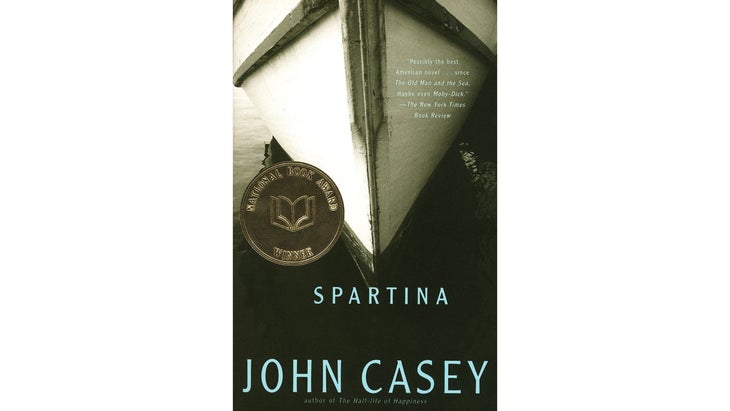
The New York Times called this “possibly the best American novel about going fishing since The Old Man and the Sea, maybe even Moby-Dick.” Dick Pierce, a commercial fisherman, is barely supporting his family pulling lobster and quahogs out the salt marshes near Narragansett Bay. That hasn’t stopped him from sinking thousands into a half-built 50-foot boat in his yard, his ticket to big-time fishing and a money pit that is the abiding passion of his life. Spartina, named after the marsh grass that thrives in the area’s salty black soil, does finally make it into the water…and straight into a hurricane that sparks a reckoning in Pierce’s life back on shore. —E.H.A.
South Carolina: The Home Place: Memoirs of a Colored Man’s Love Affair with Nature, by J. Drew Lanham (2017)
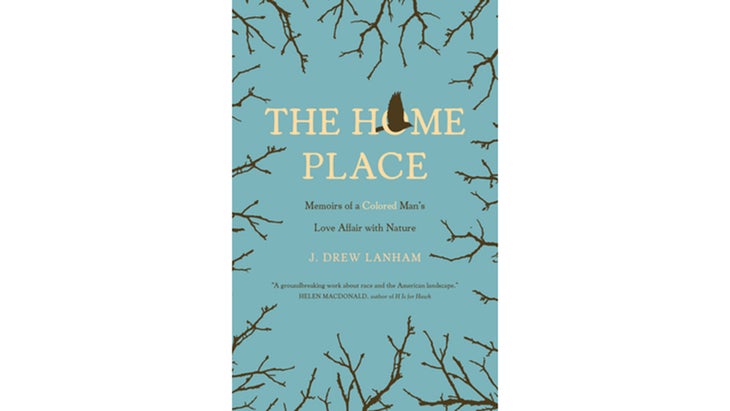
In October 2022, Drew Lanham was awarded a MacArthur “genius grant,” proof that the secret is out on one of the South’s most valuable writers and conservationists. Growing up in rural Edgefield County like generations of Lanhams before him, he surprises wild turkey and foxes on the same land where his ancestors worked as slaves. “In me,” he writes, “there is the red of miry clay, the brown of spring floods, the gold of ripening tobacco. I am, in the deepest sense, colored.” He wrestles with that history, as well as being that “rare bird,” a Black birder in a white conservation world. A professor at Clemson University, Lanham writes that his home county still has a mixed and powerful draw. “Double standards are as common as ragweed and persistent as kudzu across the region,” he writes. “But Edgefield was still my refuge, primarily because it was and is a sanctuary for creatures that aren’t subject to the prejudice of men.” —E.H.A.
South Dakota: Buffalo for the Broken Heart, by Dan O’Brien (2001)
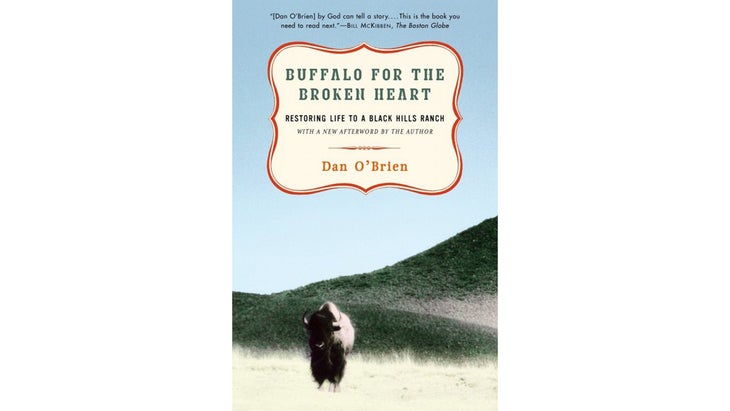
Some years after buying the Broken Heart Ranch in South Dakota, author, environmentalist, and rancher O’Brien stumbled on a radical notion in the wake of years of poor grazing conditions that decimated his cattle herd: bison. The natural inhabitants of the Great Plains are these woolly giants, not his overbred Angus cattle, which were destroying the land through their intense grazing habits. So he set off to transform his cattle ranch into a working bison preserve, which he subsequently chronicles in this impassioned memoir about the emotional struggles, backbreaking work, and redemptive exhilaration of seeing the effort through. O’Brien is an award-winning novelist, so his prose shines, and he also understands the High Plains better than most. Today, O’Brien has an even larger, 9,000-acre ranch—along with grazing leases on another 24,000 acres—and through bison ranching he has increased biodiversity on the land, helped capture vast amounts of carbon dioxide through the protection of native grasslands, and produced some of the healthiest red meat on the planet. —Ryan Krogh
Tennessee: The Forest Unseen: A Year’s Watch in Nature, by David George Haskell (2012)
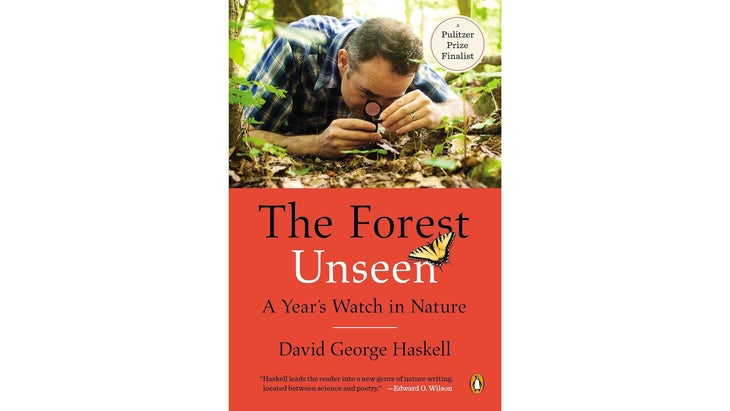
Tennessee’s Cumberland Plateau is home to uncounted bluffs, gorges, waterfalls, swimming holes—and the University of the South, a.k.a. Sewanee, a small bastion of literary all-stars, including biologist David George Haskell. In The Forest Unseen, the naturalist charts the comings and goings in a single square meter of old-growth forest over the course of a year. This is boring only in the way that Zen is boring. Yes, you sit, but it can be transformative. And indeed, Haskell’s inspiration is the Tibetan mandala, in which, he writes, “the whole universe is seen through a circle of sand.” In this particular galaxy, warblers, shrews, and salamanders (“the sharks of the leaf litter”) move as giant predators while plants deploy their own strategies to survive. “The mandala is a mulloskan Serengeti,” Haskell writes. “Herds of coiled grazers move across the open savannah of lichens and mosses.” He watches as a snail “heads toward El Capitan, or a smallish rock, depending on how you see the world….Gravity blinks and the animal flows impossibly upward.” A tiny little Alex Honnold muscling its way up a sheer rock face. —E.H.A.
Bonus Read: Flight Behavior (2012), Barbara Kingsolver’s readable bestseller about climate, butterflies, and a small Appalachian farm.
Texas: Goodbye to a River, by John Graves (1959)
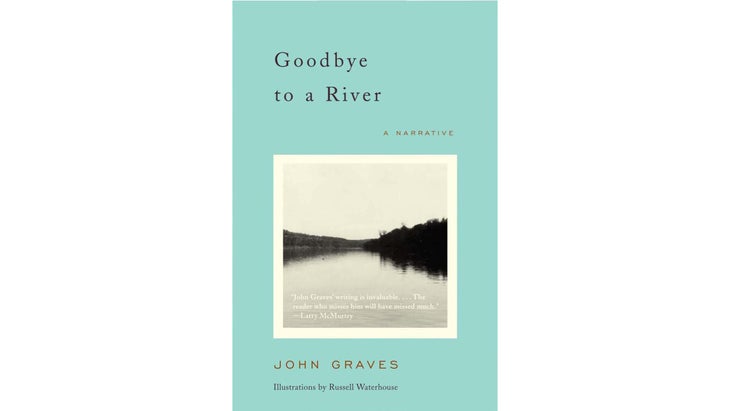
The writer John Graves lost the sight in one eye to an enemy grenade during World War II, taught English at universities in the U.S., and lived abroad in Europe and Mexico. Then, in 1957, he returned home to care for his dying father. In November of that year, he took what he thought would be a final canoe trip down the Brazos River, which was slated for several dams that would drown the riversides he’d explored since childhood. Graves’s account of that trip turned into Goodbye to a River, which weaves the narrative of the voyage with a natural and cultural history of the stream. The book was nominated for a National Book Award, and it helped stop most of the proposed dam projects. Although limited at times by the macho voice that prevailed in that era of Texas letters, Goodbye to a River is ultimately a book about trying to know yourself better by adventuring alone into the remote reaches of the place you come from. As Graves puts it: “One river, seen right, may well be all rivers that flow to the sea.” —Will Bostwick
Bonus Read: A Snake Falls to Earth (2021), Darcie Little Badger’s National Book Award–nominated YA novel about a Lipan Apache girl fighting for the environment with the help of some friends in the spirit world.
Utah: Refuge: An Unnatural History of Family and Place, by Terry Tempest Williams (1991)
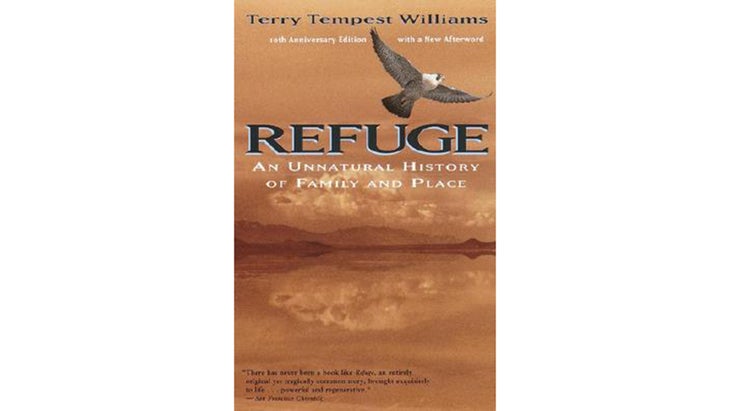
The deserts of Utah are unlike anywhere else, beautiful and harsh, full of the feeling that everything you admire could kill you. Terry Tempest Williams’s book-length essay, Refuge, holds that contrast, too. Williams is a fifth-generation Utahn, and in the mid-eighties, when her mother and other women in her family were dying of breast cancer (because, she suspects, they were exposed to atomic bomb tests the government staged in the southwestern deserts), and her favorite place, the Bear River Migratory Bird Refuge, was flooding from mismanagement of water in the desert, she dove into the question of how to live in and love a place deeply altered by humans. Refuge, like the landscape in which it’s based, is both gorgeous and harrowing. Williams makes that edge of disaster feel very close. But she also leans into the beauty of living in a harsh, human-changed landscape, a stance that feels highly relevant in Utah today. —Heather Hansman
Vermont: Long Distance: Testing the Limits of Body and Spirit in a Year of Living Strenuously, by Bill McKibben (2000)
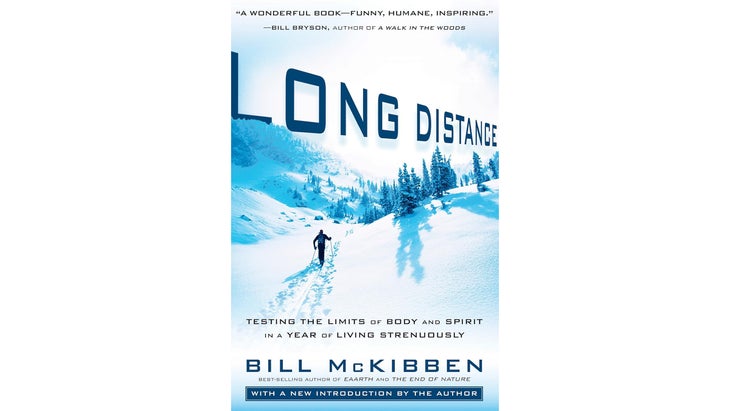
Most of us know his climate work, but Bill McKibben is also an avid cross-country ski racer. At age 37, the spindly writer embarks upon what he calls “a process of jockification.” A self-described wimp in childhood, he devotes a year of rigorous training to transform himself from an avid amateur endurance skier into a competitive cross-country racer. “Partly it was pure selfishness,” he writes. “After a decade as an environmental writer and activist, I needed a break from failing to save the world. But mostly it was curiosity that drove me. By year’s end I hoped I’d have more sense of what life lived through the body felt like.” Along the way, however, he is faced with the failings of the body when his father is diagnosed with a terminal brain tumor. One of the most personal of McKibben’s 18 books, Long Distance reveals the all-too-human athlete behind the climate warrior. “I came seeking sweat,” he writes, “and only found enlightenment.” —E.H.A.
Bonus Read: Losing the Garden: The Story of a Marriage (2005), by Laura Waterman, about the author’s husband’s choice to leave the homestead and end his life by freezing on Mount Lafayette in 2000.
Virginia: Chesapeake Requiem: A Year with the Watermen of Vanishing Tangier Island, by Earl Swift (2018)
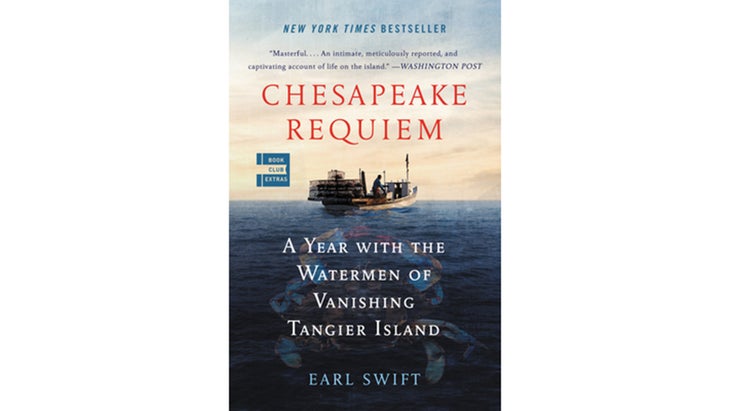
Think of this and Beautiful Swimmers, our Maryland choice, as a matched pair. Tangier Island, a speck in the Chesapeake Bay, is home to fewer than 500 people, a tight-knit community that has been anchored there since before the Revolutionary War. But the island has lost two thirds of its landmass since 1850, and thanks to climate change, the famed crabbing outpost is in danger of being overwhelmed by the waves. Outside contributor Swift chronicles the fishermen and -women over several decades, as the sea literally takes their forebears from their graves. “I consider the [head]stones for a long moment,” he writes, “wondering whether the people bearing those names ever imagined that the bay would one day claim all but these scant traces of their existence—that it would plunder their homes, their entire village, then come for what remained of them.” —E.H.A.
Bonus Read: The Vaster Wilds (2023), Lauren Groff’s raw survival novel of a young servant girl’s flight from a colony into the wilderness in the 1600s.
Washington: The Boys in the Boat, by Daniel James Brown (2013)

Turn to this for a fun, engagingly written story about the University of Washington men’s crew team in Depression-era Seattle, Washington. The climax is the boys’ gold-medal race in the pre–World War II Third Reich (not a spoiler; it’s based on real events), but below the plot of races and training are descriptions of the Emerald City and its broader region that still ring true. Granted, an enterprising lad can’t pay his way through the University of Washington (as protagonist Joe Rantz does) by working at logging camps on the Olympic Peninsula over the summer anymore. But quiet mornings on Lake Washington before practice evoke the same feeling that walking along the Montlake Cut does today: that the city isn’t so much surrounded by a beautiful natural environment as interwoven with it. —Miyo McGinn
Bonus Read: The beautiful memoir by fly-fisherman and Patagonia ambassador Dylan Tomine, Closer to the Ground (2012), of a year of foraging with his young family on an island in the Salish Sea.
Washington, D.C.: Spring in Washington, by Louis J. Halle (1947)
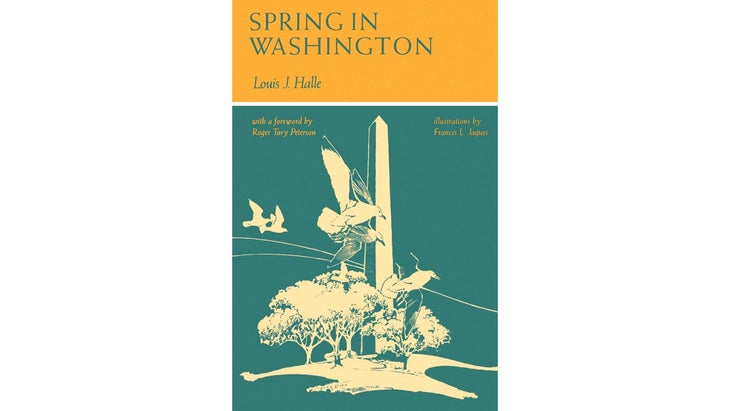
My hometown is better known for producing self-serving memoirs than great tales of adventure. The exception is this wondrous narrative, penned by a disgruntled federal bureaucrat. Bored with his job, Louis Halle became an explorer of the urban wilderness, sallying forth on his bicycle through the woods of Rock Creek Park and along the tidal fringes of the Potomac, counting mergansers and osprey in its hidden marshes before circling back toward his desk at the State Department. Spring in Washington chronicles the changes he observed over the first six months of 1945, which also happened to be the final chapter of World War II. The war goes unmentioned, but the metaphor of renewal and rebirth hangs on every page as he watches the natural world reawaken around him. Halle has been compared to Thoreau, but he was not turning his back on society; Spring in Washington is about learning how to see what is right under our noses. “I must get out of my cell, out of doors, out into the open world where I can see again,” he writes. —B.G.
West Virginia: The Third Rainbow Girl: The Long Life of a Double Murder in Appalachia, by Emma Copley Eisenberg (2020)

In the summer of 1980, two young women hitchhiking to the annual Rainbow Gathering were found murdered in a forest clearing in Pocahontas County, West Virginia. Part true crime, part memoir, The Third Rainbow Girl delves into West Virginia’s proudly hardscrabble mountain communities, into questions of misogyny and sexuality, and into what made the victims, and so many others in these mountains, want to drop out. The title refers both to a woman who decided not to accompany her friends to the festival and to Eisenberg herself, who has spent years visiting or living in Pocahontas County. “There is a deep awareness here of what the rest of America thinks a life should look like—the newest model, the fanciest vacation, the highest paying job with the best retirement plan—and, among many, a rejection of that life.” —E.H.A.
Wisconsin: Going Somewhere: A Bicycle Journey Across America, by Brian Benson (2014)
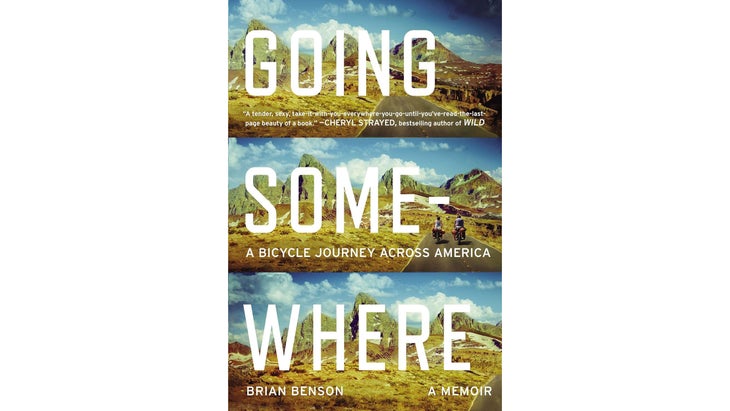
I picked up this memoir in the wobbly time after college graduation, when I, like Benson’s narrative self, was scrounging ideas for how to scaffold my hazy future. I liked his plan: to bike across America with a new partner, pedaling west from his hometown in northern Wisconsin. It didn’t take many pages for me to fall into fantasy, fixating on how to experience the world they cycled through. Because I had never been to Wisconsin before—nor, somehow, read much about it—my first reaction to the lush detail was skepticism. How had I missed that you could “read a book on a bed of pine duff” or eat blueberries beside a lake “nestled in a carpet of coniferous bog”? Though Going Somewhere unspools across America, it’s the first third of the book, in Benson’s home state, that’s lingered with me. I’ve since dog-eared the pages as an ad hoc guide for my own hiking and cross-country ski adventures there. It’s a joy to read about a place, but it’s a thrill when the words compel you to put the book down, get out a map, and start planning a trip. —Erica Berry
Wyoming: Close Range: Stories, by Annie Proulx (1999)
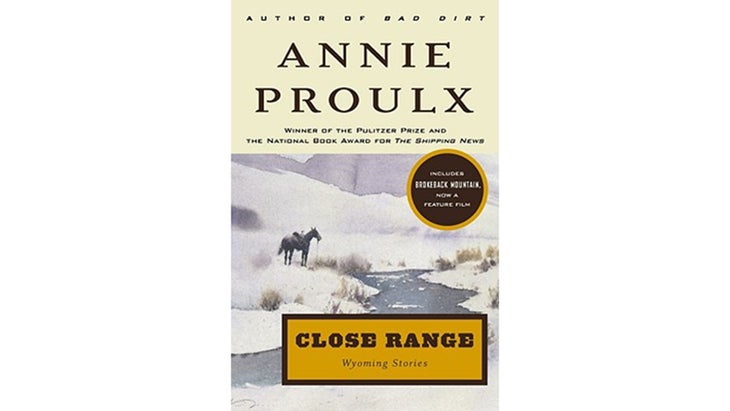
It’s appropriate that Annie Proulx should have the last word after her mic-drop short story about the love between two cowboys, Brokeback Mountain, which appears in this collection. The master of short fiction lived in Wyoming for close to 20 years, on a ranch called Bird Cloud on the North Platte River. The hard men and women of her Wyoming stories—three volumes in all—scratch out a living, freeze to death, fall in love, and fight the state’s scouring wind. That rough wind ultimately carried Proulx away as well. She sold Bird Cloud and returned to the New England of her childhood; now she lives in New Hampshire. —E.H.A.
